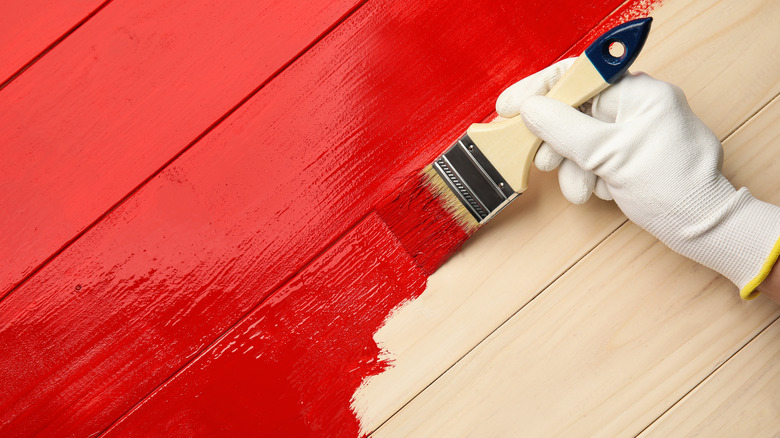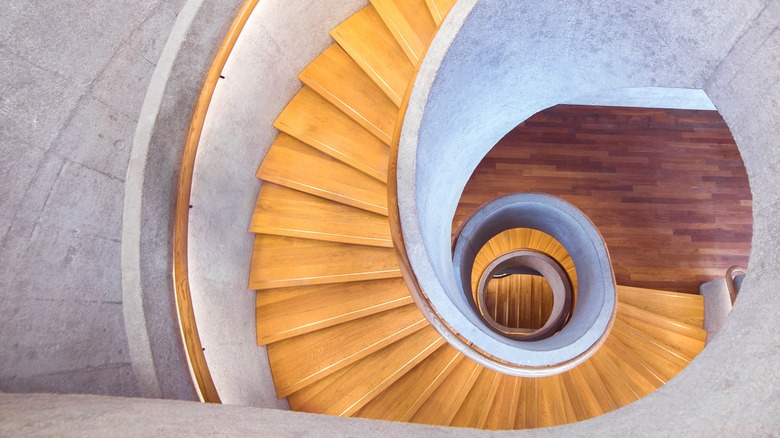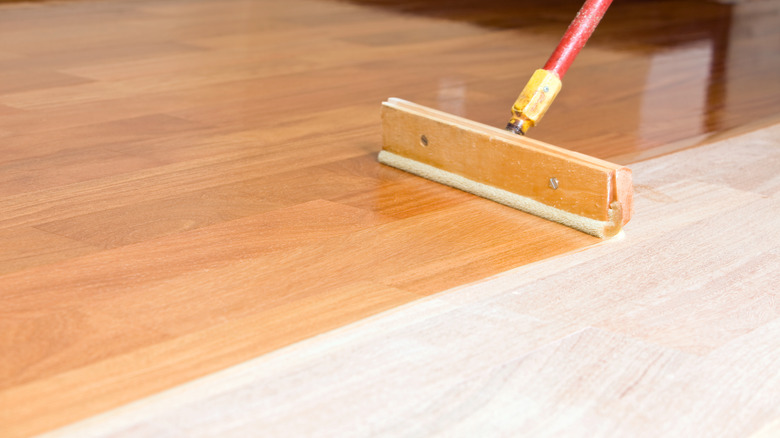What Paint Finish Should You Use On Wood Floors?
From the 1910s to 1940s most houses in the US, no matter their style, were graced with hardwood floors from the main level rooms to second-floor bedrooms. While linoleum was available at the time, vinyl was not, and carpeting was comparatively expensive and hard to clean. A plain but well-crafted wood floor, with maybe a throw rug here or there, was fairly standard.
Fast forward to the 2020s, hardwood floors are still considered valuable and durable. Regularly found in houses now about one hundred years old but also in newly constructed houses, hardwood floors continue to be popular due to their endurance and overall appearance. Many homes also have a wood staircase. The wear and tear caused by constant foot traffic calls for some thinking about the paint and finish these spaces demand.
We've mentioned that paint comes in several finishes, but when it comes to durability along staircases, hallways, and other high-traffic areas made from hardwood, we vote for semi-gloss paint every time.
The best hardwood floor finish
Options for coating hardwood floors include staining or painting, and both methods have a variety of finishes. There's matte or a flat finish, which reflects very little light, all the way up to high gloss which is highly reflective. In the spectrum of finishes, semi-gloss paint is the most durable, washable, and stain-resistant. For high-traffic areas, using a semi-gloss paint will keep the color fresh, protect from scuffs and stains, and wear well, as all those paws and shoes go up and down the hall or steps several times a day, every day. The next best choice is an eggshell finish, one step down in terms of reflecting light.
Whether you decide to paint or stain your hardwood floors comes down to personal preference, since both protect the material and the original finish. Painting a floor offers two distinct advantages. You can dramatically change the mood of the room. A room can take on new life when a darker hardwood floor is painted white, light yellow, or another pastel shade. This is especially useful for a child's room or nursery. Also, paint sits on top of the wood floor, making it easier to change the color again just by using a new paint color. Stain actually soaks into the wood.
Stain works too
Staining gives the hardwood floor gloss and protection, and it brings out the wood's natural grain. But using stain means the color of the floor or treads is not going to change the hue of the wood itself significantly. White Oak or maple flooring will never change to a deep chestnut through stain alone. If you end up with a hardwood floor you find unappealing, consider replacing it with a more popular material, one that might have a better color to blend more readily with your furnishings and preferred decorating style.
No matter if you want to paint or stain your hardwood floor, preparation is imperative. Cleaning is a must. Some experts call for sanding, while others say this step is not needed, especially if your hardwood floors are already in good shape. Every speck of dust or grit should be removed from the floor, sanded or not. The next step is a thorough washing. Allow the floor or steps to dry.
Priming will help the paint or stain adhere to a greater degree. Then apply your color coating. Allow the first coat to dry and take a look – you may need to add a second coat to obtain the true color you envision. If the finish is what you want, you're done. If you want a different look, you may need to add a gloss coat on top.


